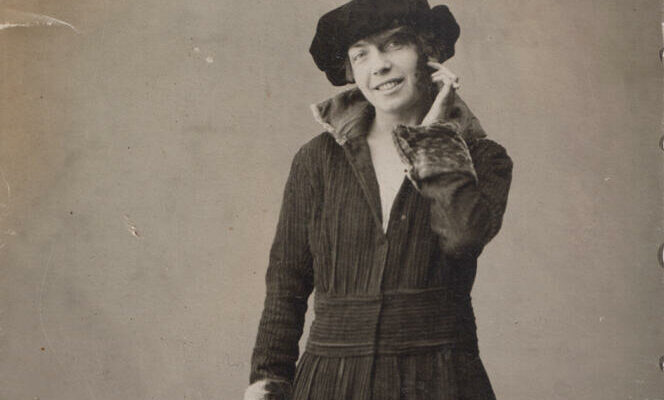The fine bridge of the nose emerges from the oval of the face, the eyebrows flare out to disappear in the hair pulled into a bun. The Sleeping Muse is, with the series of Kiss, one of the best-known sculptures by Constantin Brancusi (1876-1957), this glory of modern art to which the Center Pompidou is devoting a major retrospective from March 27 to 1er July, in Paris.
On the other hand, we know nothing, or almost nothing, about Baroness Renée Irana Frachon, who inspired this masterpiece and, moreover, offered it to the Parisian museum. “It’s insane that not a single line has been written about this woman who was Brancusi’s friend for fifty years and was generous with the French state,” wonders Vincent Guiot, who has been striving for four years to extract him from virtual anonymity.
Nothing predestined this affable fifty-year-old to embark on a rehabilitation operation. Alternately director of a photo gallery and a pastry shop in Toulouse, before migrating to Bavaria, where he today manages the Rothenbuch castle, rented for seminars, Vincent Guiot has not studied the history of art. But the eclectic overflows with curiosity.
On the Net, nothing about the baroness
The adventure began in 2020, when, in full confinement, he bought at auction a drawing by a little-known Swiss artist, Rodolphe Théophile Bosshard (1889-1960). Wanting to know more about the painter, he came across a Facebook group dedicated to him and which sought to locate one of his paintings, Portrait of Baroness Frachon. Who is this aristocrat that Bosshard represented with a boyish cut, but whom others have painted with a bun pulled up in curls? By typing “Frachon” into his search engine, Vincent Guiot came across entire pages devoted to trade unionist Benoît Frachon, general secretary of the CGT, from 1945 to 1967. But absolutely nothing about the baroness, except that she has inspired The Sleeping Muse.
To explore the subject, Vincent Guiot contacted Doïna Lemny, one of the best specialists on Constantin Brancusi. Touched by the autodidact’s enthusiasm, the art historian introduced him to Raphaël Armand, a great-grandnephew of the baroness, who gave him a warm welcome. “It’s obvious to fall in love with an unknown woman who meant so much to the history of art,” confides the latter, himself fascinated by the romantic charge of his grandmother.
Raphaël Armand was 13 years old when the Baroness died in 1983, forgotten by everyone, at the canonical age of 102. From then on, he strives to put together the pieces of the puzzle of a woman who worked to erase the traces of her past, by burning all the letters she had received from Brancusi and the writers she had worked with. like André Gide.
You have 52.28% of this article left to read. The rest is reserved for subscribers.
